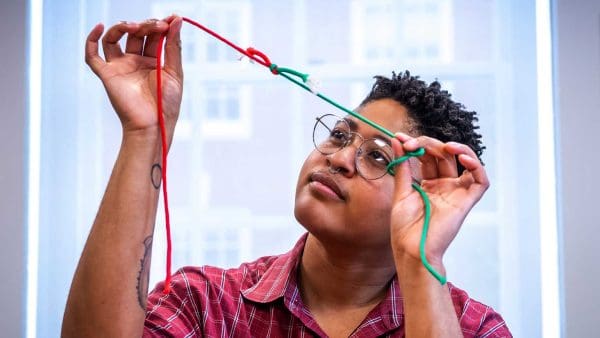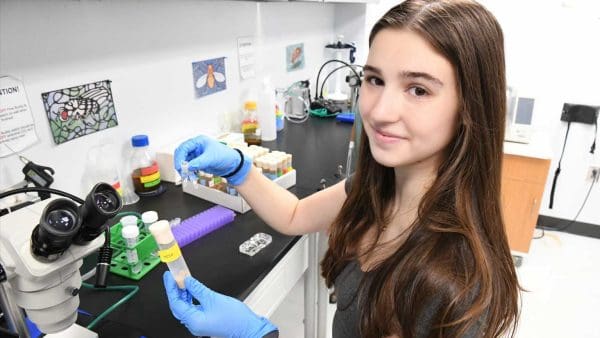
[photo by Rahwa Gebreslase]
It is common knowledge that the human brain is divided into left and right hemispheres. Perhaps less known is that this division first occurs when an embryo is five to six weeks old, about the same time that cells associated with vision divide to form the basis for our two eyeballs. When this separation doesn’t occur properly, the resulting abnormality is known as holoprosencephaly, or HPE.
HPE’s mildest variation can cause one of the most common birth defects: the mouth malformation known as a cleft palate, usually easily repairable with surgery. At its most severe, HPE can result in a fetus with a distorted, single-lobed brain and cyclopia—just one eye (rare defects that usually lead to miscarriages or stillbirths).
What causes this pivotal division to fully or partially fail? There could be environmental reasons, but senior Niat Habtemariam, a molecular and cellular biology major, is looking for other causes while working in the lab of Professor Roger Reeves in the Department of Physiology at the School of Medicine.
“The goal of the lab, in general, is to discern the genetic aspects of it,” she says. “There is a region on the 21st chromosome that is known to be associated with HPE, but it’s just a region and not a gene. We want to figure out which genes are the ones responsible.”
One gene of interest has the curious name of sonic hedgehog. (Yes, after the 1990s video game.) It makes a signaling protein that is responsible for, you guessed it, Sonic hedgehog signaling, which embryonic cells use for proper cellular differentiation. Working with cell lines, Habtemariam can “knock out” (render inoperable) certain genes and then determine whether sonic hedgehog signaling is disrupted. Understanding the genetic roots of the condition could help doctors detect and even treat the condition.
Habtemariam has worked in the lab for nearly a year, though she has had to conduct her research remotely for the past several months because of COVID-19. Lately, she has been reviewing the literature to see how sonic hedgehog signaling can be regulated to treat clinical features (such as a smaller cerebellum) of Down syndrome, a genetic disorder characterized by having three copies of the 21st chromosome.
“I’ve definitely expanded my breadth of scientific knowledge,” Habtemariam says. “I plan to go to medical school, and studying how these genetic conditions can come about has been very relevant for me. This project is unique, as not many people study this condition. Highlighting and understanding these complex and little-known abnormalities should help me better understand a lot of other things in the medical field.”




